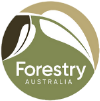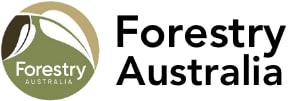
Considerations for growers impacted by fire
Following on from the devastating 2019/2020 bushfire season, the IFA/AFG have provided a few considerations to assist agroforesters and small private growers to navigate their post fire recovery
Communication is key … as in marketing all timber from small blocks you need to be in touch with local contractors and processors to assess whether there is a ready market for your burnt timber and capacity to salvage it. The latter will reflect both the age and species of your plantings and whether they are mature enough to have potential as high value product. But even if there would normally be a market for your timber, if you are in an area where very large plantation resources have been severely burnt you may find that all the local resources will be devoted to this large scale salvage and there will be little or no capacity available to harvest a small block. All considerations and knowledge needed to effectively document the claim on your insurance if your planting is insured.
Price paid for your burnt timber will reflect age, species, log size and volume and the severity of damage along with ease of harvesting access and distance to mill or processor. So all the usual market drivers but with the added issue of possible wood quality degrade.
Wood quality – this will vary with species …. Please consider that if a fire has been hot enough to heavily burn bark – either completely or in patches it has probably killed or wounded the cambium layer and many tree species will respond with resin (conifers) or kino (eucalypts) which will degrade the wood for most products. So even if the trees have a partial crown with limited scorch and survive the fire, their vigour and productivity may be negatively impacted and their wood may be degraded with resin/kino flooding as a wounding response. The latter may take many months or even 1-2 years to become obvious – some initial felling and crosscutting to look for damage to the wood is needed. Productivity impacts will depend on the severity of crown loss (think about pruning impacts on growth rates – pruning should have minimal short-term impact if done well to a tested prescription but can set back trees for several years if too much crown is removed in one operation).
Storage of salvaged timber
Pine growers will know that the window for salvage is short before staining issues arise from blue stain fungi infection. If you have small volumes and can mill and store/dry them undercover there are surface treatments that can be applied to minimise degrade.
Eucalypt growers need to consider what products their trees have been grown for and how their quality might be impacted if they are not salvage harvested quickly. Some species and trees will split and crack significantly if allowed to dry out either on stump or as felled logs – significantly reducing recovery of sawn or veneered products.
Where long term storage of fire salvaged timber has been undertaken in Australia it has had mixed results. Although wood that is totally saturated by storing under water should not decay issues have arisen from both fungal and insect attack. All wood stored in dams or under sprinkler irrigation tends to be colonised by bacteria that feed on the sugars in the sap. When they are processed these bacteria can cause a very unpleasant odour (particularly under heat in kilns) – so processors close to urban housing have to consider the impact on their neighbours and may not want to purchase stored wood.
Even with debarking a certain amount of charcoal tends to find its way into processing facilities and increases costs due to extra wear and tear on equipment or can contaminate paper products. Therefore, royalties paid for fire damaged wood are likely to reflect these extra costs or may limit the interest from some processors to purchase any of this wood.
If you are an IFA/AFG member and are looking for advice after their forest plantations have been burnt in recent bushfires please contact the IFA/AFG so we can direct you to advise and support.

